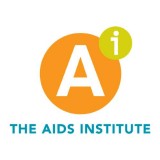Reaching Aging Adults Living with or at Risk of HIV, A New Media and Technology Strategy

Editor's Note: Our July 23, 2013 post announced support for 10 organizations serving communities of color, other communities at highest risk of HIV, and people living with HIV with the intent to stimulate and support new media planning. Today we start an intermittent series of posts to feature the varied experience of each organization as each built their capacity to integrate the use of new media in response to HIV.Over the past decade, social media has become more advanced than we could have ever imagined. Yet, older adults’ adoption of new media tools has lagged behind that of younger generations. For a growing number of older adults living with HIV or their caretakers, use of social media can support the ability to find credible sources of health information and support health-related social needs.
In the “Reaching Aging Adults Living with or at-risk of HIV - A New Media and Technology Strategy” project, The AIDS Institute (TAI)Exit Disclaimer provided new media training opportunities education, resources, and information targeting adults over 50 living with HIV or at risk of HIV infection. TAI developed a New Media and Technology SurveyExit Disclaimer to gain information around new media and technology usage and topical interests; the survey was distributed to aging adults living with HIV/AIDS and organizations working with them. TAI then planned and conducted four New Media and Technology E-Learning SessionsExit Disclaimer for this target group. These trainings addressed blogs, online collaboration tools, Twitter, RSS feeds, social networking sites, webcasts, web conferences, webinars, podcasts and QR codes.
We also developed and distributed four New Media & TechLink E-NewslettersExit Disclaimer. In these publications, TAI highlighted “targeted users” by sharing their new media e-learning stories or best practices on how the use of technology was making a difference in their lives. We also distributed these educational information and print ready resources to key partners.
To increase online and mobile technology usage, TAI created a centralized web portal on TAI’s existing older adults and HIV/AIDS webpage www.nhaad.orgExit Disclaimer. TAI continues to update and promote the use of new media on our websiteExit Disclaimer.
By collecting feedback about our training resources, we learned that we successfully increased online and mobile technology usage and enhanced collaboration among our targeted audience. TAI plans to host additional E-learning sessions and release more New Media and TechLink E-newsletters.
To download our resources or to share your new media or technology experiences, visit Aging Adults Media StrategyExit Disclaimer or add a comment below.